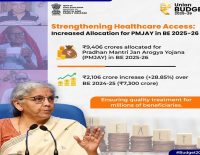Reduced death rate during omicron-led wave reason for lower intake of Booster: Expert

With this year’s Omicron-led Covid wave, the death rate came down much lower in comparision with the Delta variant last year. This lowered severity and threat level could be one of the main reasons for the lower intake of booster dose among the population, said Dr Rajeev Jayadevan, Co-Chairman National IMA COVID Task Force.
The government administered booster doses against Covid-19 free of cost to all adults for 75 days from July 15 to mark the country’s 75th year of Independence. As per the data, the 75-day free drive significantly increased the demand for the third shot of the vaccine and brought coverage among eligible population from 8% to 27 per cent. In all, 159.2 million precaution doses were administered during this 75-day period, government data shows. However, the overall booster dose intake remain in poor among the population.
“Most adults in India are fully vaccinated, and many have also had natural infection. There is substantial immunity prevailing in the community, which is the likely reason for low hospital caseloads of COVID in most parts of India at this time. Booster doses revive immune memory and also boost mucosal immunity for a few months. But the vaccines used in India are different from those used in the west. Besides, they are based on the ancestral strain, which is no longer in circulation. We also do not have published studies on clinical outcomes in our population after booster use”, said Dr Jayavedan.
While talking about the booster outside the country, he said, “Booster studies from western nations are primarily based on mRNA vaccines, which are not used in India. Therefore western research conclusions cannot be extrapolated to the India scenario. Besides, the boosters used in western nations now are based on Omicron, which is a more recent version of the virus. Although the lab based data are encouraging, whether such bivalent boosters are better than the original when used in actual people, remains to be seen”.
Being a cyclical viral disease, COVID-19 occurs in waves spread months apart, and each geographic region goes through high tide and low tide. Those who took a booster dose should not be under the impression that all other precautions can be discarded. Indoor masking in public places and attention to ventilation and air quality are important to reduce overall infection risk.
“We are somewhat fortunate that the latest variant Omicron and its numerous sublineages such as BA.2.75 and XBB are of lower severity than delta, although more infective and immune evasive. Importantly, Omicron sublineages cause less lung damage than delta. Continued evolution is occurring in this new virus which is still not fully known to man. Active surveillance is required to detect and report any further new variants that could have a different biological property than Omicron. We must also keep in mind that for a new variant to cover the globe it takes very little time, for example Omicron took only 6 weeks to spread all around the world, knocking delta off its pedestal. We cannot therefore let our guard down”, he said.
Mucosal vaccines are relatively new. They have the ability to shore up the immunity in the nose and throat, which are the entry points of the virus – and this could reduce infection and transmission risk. They also have a role as boosters. However, large scale studies are awaited about how effective and safe they are. Those most likely to benefit from booster use are older individuals, and those who have certain disease conditions that put them at greater risk for serious COVID outcomes, Dr Jyavedan advised.








Comments